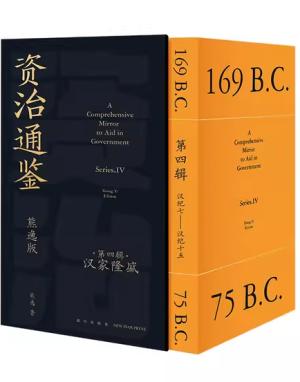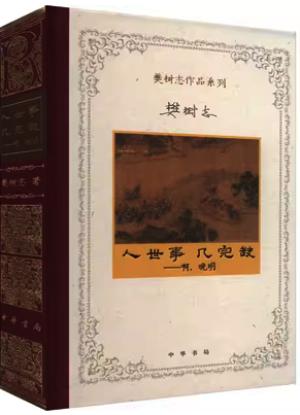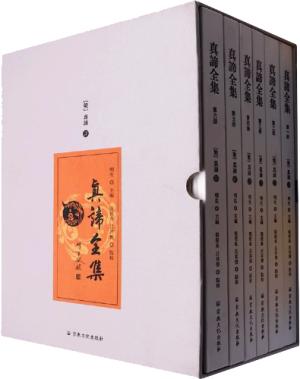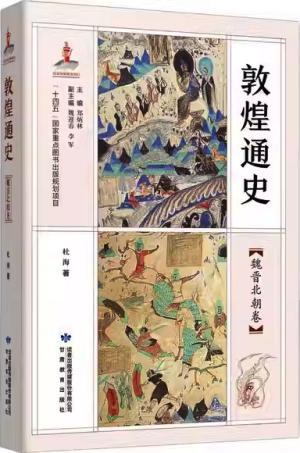新書推薦:

《
资治通鉴熊逸版:第四辑
》
售價:HK$
470.8

《
中国近现代名家精品——项维仁:工笔侍女作品精选
》
售價:HK$
66.1

《
宋瑞驻村日记(2012-2022)
》
售價:HK$
115.6

《
汗青堂丛书138·帝国的切口:近代中国口岸的冲突与交流(1832-1914)
》
售價:HK$
127.4

《
人世事,几完缺 —— 啊,晚明
》
售價:HK$
115.6

《
樊树志作品:重写明晚史系列(全6册 崇祯传+江南市镇的早期城市化+明史十二讲+图文中国史+万历传+国史十六讲修订版)
》
售價:HK$
498.0

《
真谛全集(共6册)
》
售價:HK$
1156.4

《
敦煌通史:魏晋北朝卷
》
售價:HK$
162.3
|
| 編輯推薦: |
|
数值分析Numerical Analysis(第2版)本书采用中、英两种语言编写,各章都配有大量的习题及上机实验题目,并附有部分习题的参考答案及数学专业软件Mathematica和Matlab的简介。
|
| 內容簡介: |
|
本书介绍了科学计算中常用数值分析的基础理论及计算机实现方法。主要内容包括:误差分析、插值、函数逼近、数值积分和数值微分、非线性方程的数值解法、线性方程组的直接解法、线性方程组的迭代解法、常微分方程的数值解法及相应的上机实验内容等。各章都配有大量的习题及上机实验题目,并附有部分习题的参考答案及数学专业软件Mathematica和Matlab的简介。本书采用中、英两种语言编写,适合作为数学、计算机和其他理工类各专业本科数值分析(计算方法)双语课程的教材或参考书,也可供从事科学计算的相关技术人员参考。
|
| 關於作者: |
|
苏岐芳,副教授,台州学院数学与信息工程学院副院长
|
| 目錄:
|
1 Error Analysis ......1
1.1 Introduction ............ 1
1.2 Sources of Errors .... 2
1.3 Errors and Significant Digits
.......... 4
1.4 Error Propagation ... 8
1.5 Qualitative Analysis and Control of
Errors ............ 9
1.5.1 Ill-condition Problem and Condition
Number....................... 9
1.5.2 The Stability of Algorithm .. 10
1.5.3 The Control of Errors .......... 11
1.6 Computer Experiments.................
14
1.6.1 Functions Needed in the Experiments
by Mathematica ...... 14
1.6.2 Experiments by
Mathematica...................... 14
1.6.3 Functions Needed in the Experiments
by Matlab................ 16
1.6.4 Experiments by Matlab ....... 16
Exercises 1..................... 17
2 Interpolating.......19
2.1 Introduction .......... 20
2.2 Basic Concepts ..... 21
2.3 Lagrange Interpolation
................. 22
2.3.1 Linear and Parabolic Interpolation
.............. 22
2.3.2 Lagrange Interpolation
Polynomial............. 24
2.3.3 Interpolation Remainder and Error
Estimate....................... 25
2.4 Divided-differences and Newton
Interpolation .... 29
2.5 Differences and Newton Difference
Formulae..... 33
2.5.1 Differences .. 33
2.5.2 Newton Difference Formulae ......................
35
2.6 Hermite Interpolation
................... 38
2.7 Piecewise Low Degree
Interpolation.................... 42
2.7.1 Ill-posed Properties of High Degree
Interpolation .............. 42
2.7.2 Piecewise Linear Interpolation
.................... 43
2.7.3 Piecewise Cubic Hermite
Interpolation....... 44
2.8 Cubic Spline Interpolation............
45
2.8.1 Definition of Cubic Spline... 45
2.8.2 The Construction of Cubic Spline
............... 46
2.9 Computer Experiments.................
49
2.9.1 Functions Needed in the Experiments
by Mathematica ...... 49
2.9.2 Experiments by
Mathematica...................... 50
2.9.3 Experiments by Matlab ....... 56
Exercises 2................... 64
3 Best Approximation ...................68
3.1 Introduction .......... 68
3.2 Norms ................... 69
3.2.1 Vector Norms ......................
69
3.2.2 Matrix Norms ......................
74
3.3 Spectral Radius..... 76
3.4 Best Linear Approximation .......... 79
3.4.1 Basic Concepts and
Theories....................... 79
3.4.2 Best Linear Approximation . 81
3.5 Discrete Least Squares Approximation
................ 82
3.6 Least Squares Approximation and
Orthogonal Polynomials........ 87
3.7 Rational Function Approximation 94
3.7.1 Continued Fractions ............ 94
3.7.2 Pad Approximation............ 97
3.8 Computer Experiments.................
99
3.8.1 Functions Needed in The Experiments
by Mathematica..... 99
3.8.2 Experiments by
Mathematica.................... 100
3.8.3 Functions Needed in The Experiments
by Matlab ............ 106
3.8.4 Experiments by Matlab ..... 106
Exercises 3................. 111
4 Numerical Integration and Differentiation
........114
4.1 Introduction ........ 115
4.2 Interpolatory Quadratures...........
116
4.2.1 Interpolatory Quadratures.. 116
4.2.2 Degree of Accuracy........... 117
4.3 Newton-Cotes Quadrature
Formula.................... 118
4.4 Composite Quadrature Formula . 123
4.4.1 Composite Trapezoidal Rule .....................
123
4.4.2 Composite Simpsons Rule
....................... 124
4.5 Romberg Integration...................
125
4.5.1 Recursive Trapezoidal Rule
...................... 125
4.5.2 Romberg Algorithm .......... 126
4.5.3 Richardsons Extrapolation
....................... 128
4.6 Gaussian Quadrature Formula .... 129
4.7 Multiple Integrals
....................... 134
4.8 Numerical Differentiation...........
135
4.8.1 Numerical Differentiation . 135
4.8.2 Differentiation Polynomial
Interpolation .. 137
4.8.3 Richardsons Extrapolation
....................... 141
4.9 Computer Experiments............... 144
4.9.1 Functions Needed in the Experiments
by Mathematica .... 144
4.9.2 Experiments by
Mathematica.................... 144
4.9.3 Experiments by Matlab ..... 149
Exercises 4................... 153
5 Solution of Nonlinear Equations
......................156
5.1 Introduction ........ 156
5.2 Basic Theories .... 158
5.3 Bisection Method 159
5.4 Iterative Method and Its
Convergence................ 162
5.4.1 Fixed Point and Iteration ... 162
5.4.2 Global Convergence.......... 163
5.4.3 Local Convergence............ 165
5.4.4 Order of Convergence ....... 167
5.5 Accelerating Convergence.......... 168
5.6 Newtons Method .......................
170
5.6.1 Newtons Method and Its Convergence
.... 170
5.6.2 Reduced Newton Method and Newtons
Descent Method ....................... 172
5.6.3 The Case of Multiple
Roots....................... 173
5.7 Secant Method and Muller Method
.................... 174
5.7.1 Secant Method................... 174
5.7.2 Muller Method................... 175
5.8 Systems of Nonlinear Equations. 176
5.9 Computer Experiments............... 179
5.9.1 Functions Needed in the Experiments
by Mathematica .... 179
5.9.2 Experiments by
Mathematica.................... 180
5.9.3 Experiments by Matlab ..... 185
Exercises 5................. 188
6 Direct Methods for Solving Linear Systems
....191
6.1 Introduction ........ 192
6.2 Gaussian Elimination..................
193
6.2.1 Basic Gaussian
Elimination....................... 193
6.2.2 Triangular Decomposition. 197
6.3 Gaussian Elimination with Column
Pivoting ..... 200
6.4 Methods of the Triangular
Decomposition......... 202
6.4.1 The Direct Methods of The Triangular
Decomposition .... 202
6.4.2 The Square Root Method .. 203
6.4.3 The Speedup Method......... 206
6.5 Analysis of Round-off Errors ..... 210
6.5.1 Condition Number............. 210
6.5.2 Iterative Refinement .......... 214
6.6 Computer Experiments............... 215
6.6.1 Functions Needed in the Experiments
by Mathematica .... 215
6.6.2 Experiments by
Mathematica.................... 215
6.6.3 Functions Needed in the Experiments
by Matlab.............. 222
6.6.4 Experiments by Matlab ..... 222
Exercises 6................... 227
7 Iterative Techniques for Solving Linear
Systems ....................230
7.1 Introduction ........ 231
7.2 Basic Iterative Methods ..............
233
7.2.1 Jacobi Method ................... 234
7.2.2 Gauss-Seidel Method ........ 236
7.2.3 SOR Method...................... 237
7.3 Iterative Method Convergence ... 238
7.3.1 Basic Theorems ................. 238
7.3.2 Some Special Systems of
Equations.......... 243
7.4 Computer Experiments............... 247
7.4.1 Functions Needed in The Experiments by
Mathematica... 247
7.4.2 Experiments by
Mathematica.................... 247
7.4.3 Experiments by Matlab ..... 251
Exercises 7................... 255
8 Numerical Solution of Ordinary
Differential Equations ............258
8.1 Introduction ........ 258
8.2 The Existence and Uniqueness of
Solutions....... 260
8.3 Taylor-Series Method.................
262
8.4 Eulers Method ... 263
8.5 Single-step Methods ...................
267
8.5.1 Single-step Methods.......... 267
8.5.2 Local Truncation Error ...... 267
8.6 Runge-Kutta Methods ................
268
8.6.1 Second-Order Runge-Kutta
Method.......... 268
8.6.2 Fourth-Order Runge-Kutta
Method........... 270
8.7 Multistep Methods......................
271
8.7.1 General Formulas of Multistep
Methods... 272
8.7.2 Adams Explicit and Implicit
Formulas...... 273
8.8 Systems and Higher-Order Differential
Equations..................... 275
8.8.1 Vector Notation ................. 276
8.8.2 Taylor-Series Method for
Systems............ 278
8.8.3 Fourth-Order Runge-Kutta Formula for
Systems.............. 279
8.9 Computer Experiments............... 281
8.9.1 Functions Needed in the Experiments
by Mathematica .... 281
8.9.2 Experiments by
Mathematica.................... 281
8.9.3 Experiments by Matlab ..... 286
Exercises 8................... 290
Appendix ...............293
Appendix A Mathematica Basic Operations
............ 293
Appendix B Matlab Basic Operations
...................... 309
Appendix C Answers to Selected
Question.............. 327
Reference..............332
|
| 內容試閱:
|
本书第1 版出版以来,得到了许多专家、同仁及读者的关心、支持和帮助,并提出了许多宝贵意见和建议。借再版之机,首先向关心本书的广大读者、专家、同行和本书的各位责任编辑表示由衷的谢意!
在修订中,为了更适合当前双语教学的需求,我们保留了原教材的系统和编写风格(理论部分以中文为主,软件实现部分以英文为主),注意吸收当前国内外教材改革中一些成功的经验,努力体现创新教学理念,以利于激发学生自主学习,提高实践应用能力,培养综合素质和创新能力。
本次再版修订的内容主要包括以下几方面:
1.订正了语言文字表达方面的不足之处,力求用词规范,表达确切。
2.剔除了个别内容重复和烦琐之处,使理论部分更好地体现够用为度的编写原则。
3.恰当地处理有关定理的证明和有关例题的求解方法,使其更加通俗易懂。
4.增补了多重积分、有理逼近、Pad逼近等内容,进一步体现教材的先进性。
5.结合增补内容,对习题配置作了进一步充实、完善。
6.在实验部分,大量增加了算法的Matlab
实现程序及相应的算例,以便于指导学生实践应用。
本书由浙江台州学院苏岐芳副教授主编,浙江台州学院郑学良教授、李希文副教授和应玮婷老师参与修订。具体写作分工为:第1 章、第2 章及附录由李希文修订;第3章由郑学良修订;第4章~第8章由苏岐芳修订;全书的计算机实验由应玮婷修订。
在本书修订过程中,浙江师范大学徐秀斌教授为本书提出了许多宝贵意见,浙江海洋学院郝彦教授、朱玉辉老师及厦门理工学院陈淑萍老师,对本书的编写都做了大量工作,在此一并表示衷心感谢!
编
者
2016年10月
|
|









